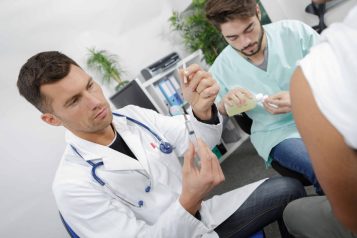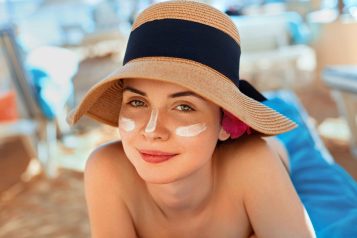Springhouse Dermatology is an integrated skin health and wellness center led by double Board-Certified Dermatologist Margo Weishar, MD. We offer patients a comprehensive approach to skin including the most current technology in laser medicine, advanced use of injectables by expert physicians, and a team of experienced practitioners to provide your care. As dermatologists, we are uniquely able to care for all medical skin concerns as well as cosmetic needs, integrating the latest techniques and technology in skin wellness. Haute Beauty sat down with Dr. Margo Weishar to discuss what to do if you have skin pigmentation.
 Photo Credit: ShutterstockThe eyes are the focal point of your upper face, and a common area that people wish to address cosmetically. The skin around the eyelids is also the thinnest and most delicate part of the body and, as a result, it is where you will start to see the first signs of aging. When you begin to notice aging around the eyes and fine wrinkling on the lower lids, you may be unsure where to seek treatment. Haute Beauty expert Dr. Margo Weishar, a board-certified dermatologist and founder of Springhouse Dermatology in Philadelphia, offers non-surgical eye rejuvenation treatment options, including lasers, neuromodulators and fillers.
Photo Credit: ShutterstockThe eyes are the focal point of your upper face, and a common area that people wish to address cosmetically. The skin around the eyelids is also the thinnest and most delicate part of the body and, as a result, it is where you will start to see the first signs of aging. When you begin to notice aging around the eyes and fine wrinkling on the lower lids, you may be unsure where to seek treatment. Haute Beauty expert Dr. Margo Weishar, a board-certified dermatologist and founder of Springhouse Dermatology in Philadelphia, offers non-surgical eye rejuvenation treatment options, including lasers, neuromodulators and fillers.
When is it time to rejuvenate your eyes?
The thin skin around your eyes shows the first signs of aging, as it becomes less resilient to the constant motion of blinking and other facial expressions over time. However, that is not the only reason you’d consider rejuvenating your eyes.
Factors including sun damage, smoking, and other toxins such as pollution enhance the rate of skin breakdown. You might also notice that your upper eyelids start to crease or become lower over the eye due to inherited genetic factors. Other reasons for rejuvenation include your eyebrow position lowering, causing drooping of the upper lid. Many people also use their frown muscles excessively, which can bring the brows together and lower over the eyes giving off an “angry” appearance.
Is there a specific laser used for eye rejuvenation?
Rejuvenation of the eyes requires an individual analysis of the condition of the skin, the contribution of muscular activity, anatomical changes surrounding the eye’s structures such as bones and ligaments, and an assessment of the volume loss around the eye and mid-face.
Depending on the factors that contribute to the problem, solutions may include:
- Medical grade skin care formulated for the eye area to repair collagen and elastin fibers
- Lasers and radiofrequency devices to address darkening, tighten skin, and resurface fine lines
- Neuromodulators to relax overactive muscles
- Fillers to support the ligaments around the eye
- Consideration of surgery for those who would not benefit from non-invasive procedures
Medical grade skincare may include a form of retinoid and peptides that can help stimulate repair to the elastic fibers in the skin. A good sunscreen made for the eye is also helpful. Other ingredients may include antioxidants to prevent damage and caffeine to reduce swelling.
The best laser for the eye area is the CO2 laser. It has been shown to provide the most tissue tightening effect and resurfacing ability. This procedure requires a one-week downtime and must be done by a physician experienced in the safety and best use of the device. Radiofrequency devices may be used as well with less downtime and a more subtle effect.
 Photo Credit: Shutterstock
Photo Credit: Shutterstock
How do neuromodulators and fillers rejuvenate the eyes?
Neuromodulators have become a staple for eye rejuvenation primarily because they produce a chemical brow lift effect and relaxation of the crow’s feet. Treatment of the glabella (the area between the brows) can lift the brows and give the face an open, relaxed look.
Injectable fillers can support the tissues around the eye and are often used when the mid-face lacks support. Fillers must be used with caution in the orbital hollow and tear trough to avoid a swollen appearance after injection. Hyaluronic fillers all absorb moisture from the tissues. An experienced physician can use these in small amounts in the area to improve the overall appearance.
When would someone not be a candidate for a non-invasive rejuvenation of the eyes?
The best candidates for surgery are those with a high degree of tissue laxity in the upper lids or a prominent fat pad in the lower lid (commonly referred to as a “bag”). I will always discuss the surgical option with these patients, although some elect to have non-invasive procedures with the understanding that they will have a subtle improvement.
For more information, visit Dr. Brian A. Levine's social media:

























